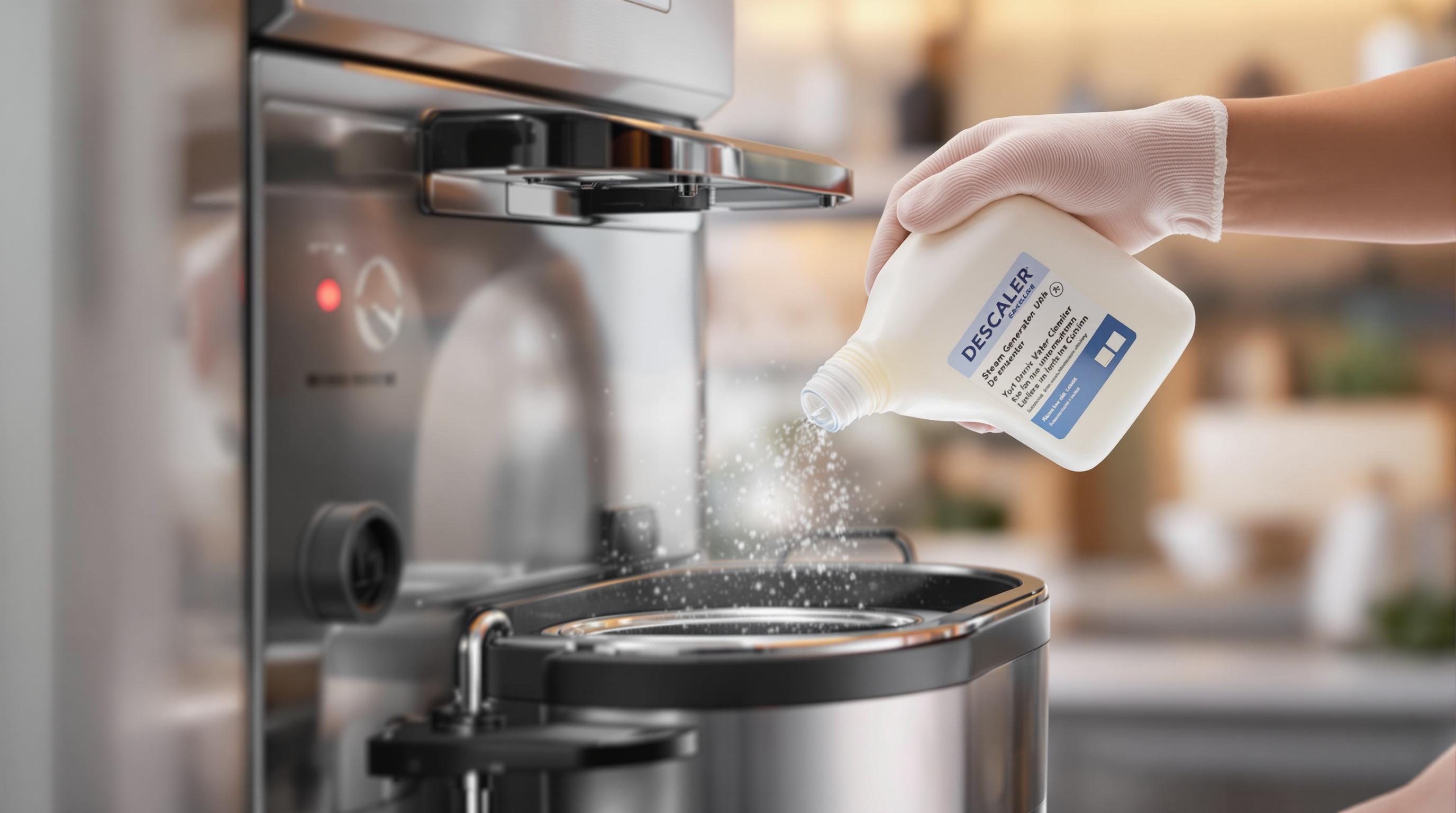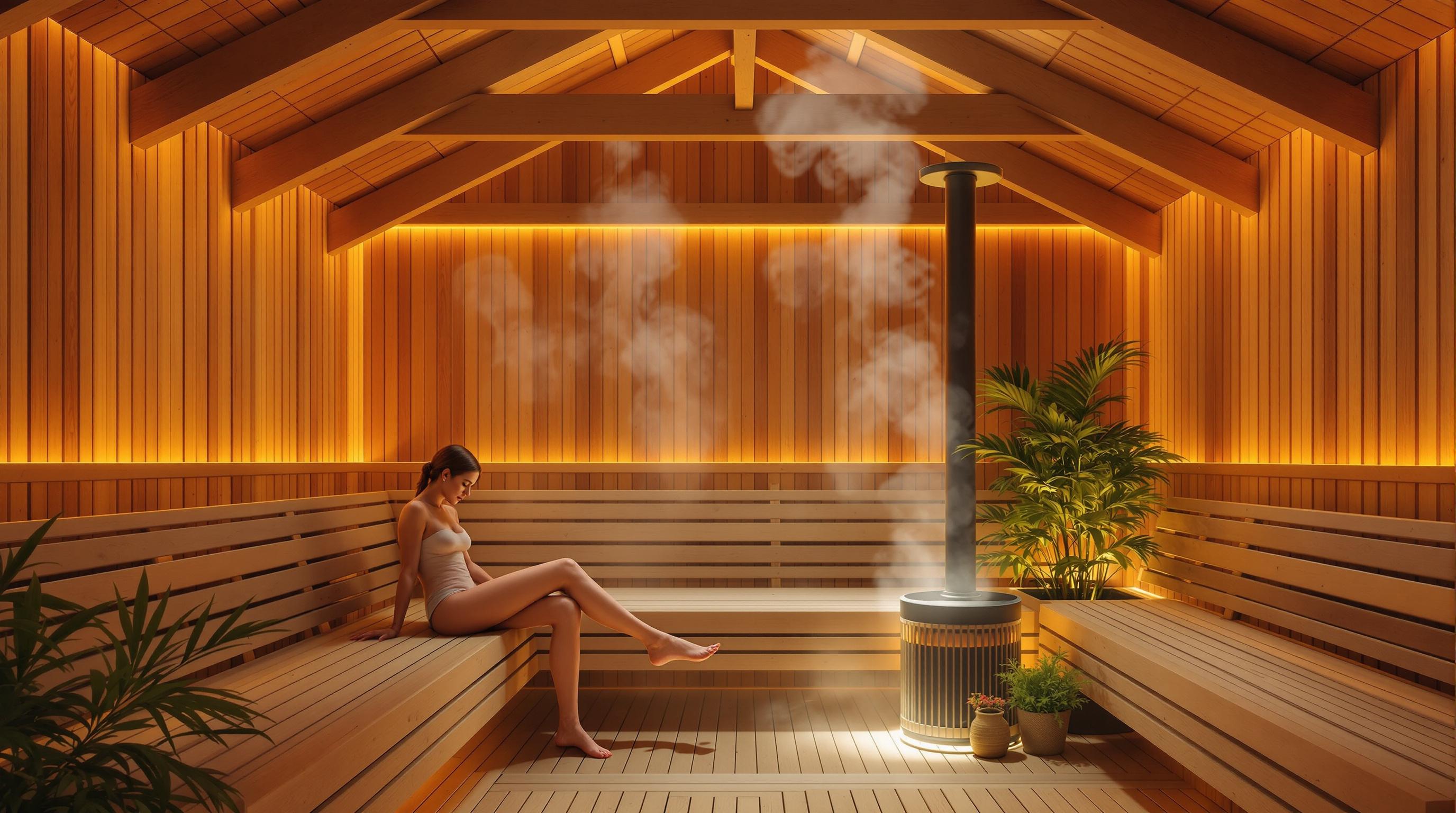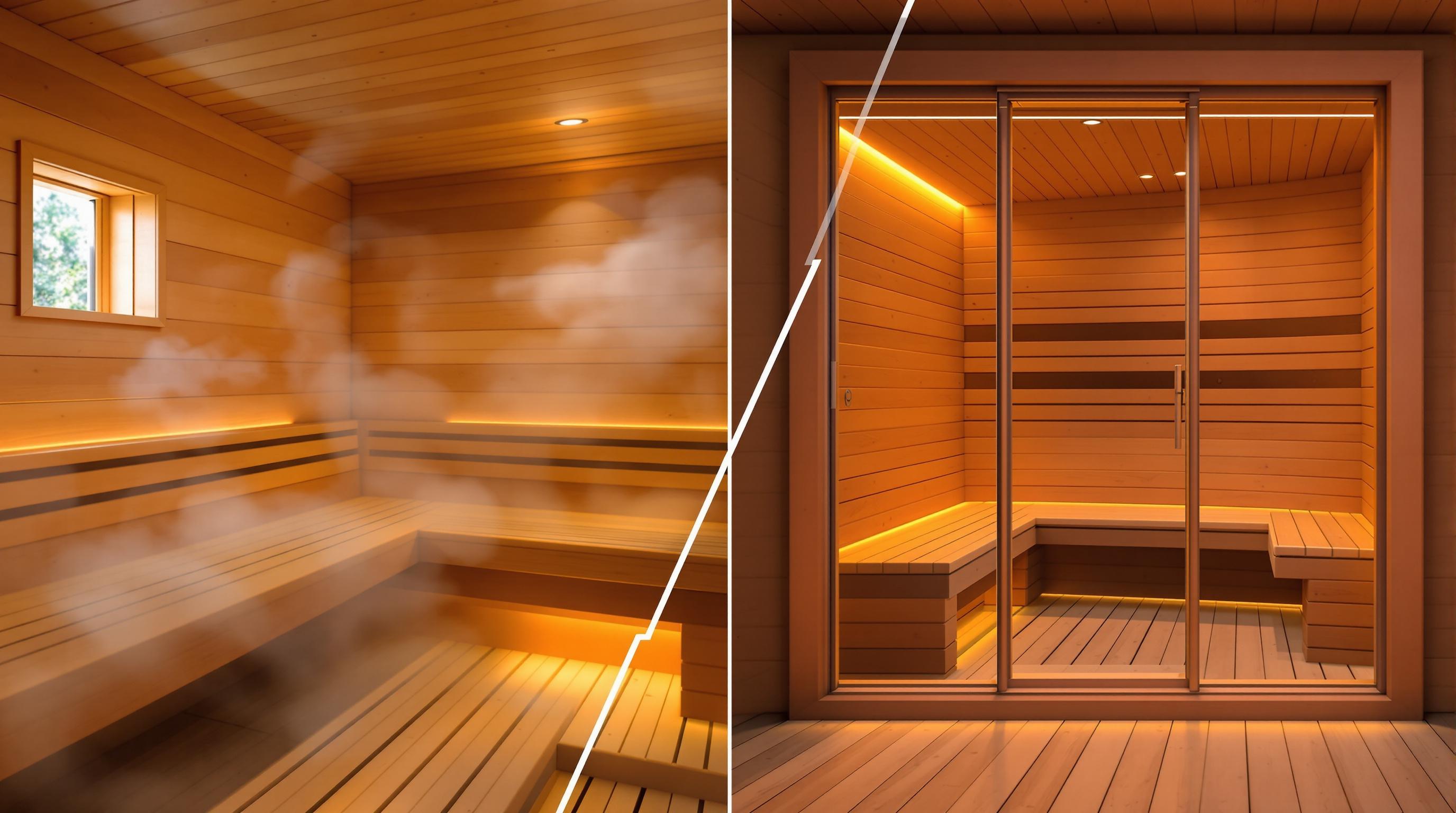Planning to install a home sauna? Be prepared for more than just the upfront cost. Hidden expenses like electrical upgrades, plumbing modifications, permits, and structural changes can quickly add up. Here’s the key breakdown:
- Installation Costs: $3,000–$10,000 depending on sauna type (infrared, steam, Finnish, etc.).
- Electrical Upgrades: Dedicated circuits or panel upgrades may be required.
- Plumbing Changes: Steam saunas often need water lines, drainage, and pressure regulators.
- Permits: Fees range from $92–$168, depending on your location.
- Labor Costs: Professionals like electricians and plumbers charge $45–$200/hour.
Pro Tip: Budget an extra 15–20% for unexpected expenses and consider energy-efficient models to save on long-term costs. Hiring licensed professionals ensures safety and compliance with local codes.
Understanding the Costs of Home Sauna Installation
Typical Installation Costs
The cost of installing a home sauna can vary widely depending on several factors. Generally, you can expect to spend between $3,000 and $10,000, with the average homeowner paying around $4,500 [1]. Here's a quick breakdown of typical costs based on sauna type:
| Sauna Type | Installation Cost Range |
|---|---|
| Finnish | $1,500 - $2,500 |
| Electric/Gas | $1,200 - $3,000 |
| Steam | $2,800 - $5,800 |
| Infrared | $4,500 - $6,500 |
Additionally, contractor fees range from $45 to $200 per hour, depending on the complexity of the job and your location [3].
Factors Affecting Costs
Several factors can influence the final price you’ll pay for your sauna:
- Location: Outdoor saunas often cost less upfront but may require extra work, like laying a concrete slab or building a deck, which adds to the overall expense [4].
- Size and Materials: Larger saunas and high-quality materials, such as cedar, increase the price but also enhance durability.
- Customization: Prefab kits are the most budget-friendly option [3]. However, adding features like specialized lighting or custom bench designs can drive up costs significantly.
- Maintenance: Don’t forget about yearly upkeep, which can range from $150 to $600 [1].
If you want to save on long-term expenses, energy-efficient models are worth considering.
"Choosing energy-efficient sauna models can help reduce ongoing maintenance and operational costs. For example, wood-burning saunas can offer more energy efficiency compared to electric or gas models" [4].
Lastly, it's a good idea to set aside an extra 15-20% of your budget for unexpected costs that might pop up during installation. Proper planning helps ensure you’re prepared for both the upfront and ongoing expenses of owning a sauna.
Hidden Costs to Watch Out For
Electrical Upgrades
Adding a sauna often means making changes to your home's electrical system. Most modern saunas need their own dedicated electrical circuits that align with the National Electrical Code (NEC). Depending on your setup, you might face costs for:
- Installing a new circuit
- Upgrading your electrical panel for added capacity
- Modifying wiring to ensure safety and compliance
If your system is outdated, hiring a licensed electrician is a must to meet safety standards and comply with codes [1].
For water-based saunas, electrical upgrades might not be the only surprise expense.
Plumbing Changes
Steam saunas often come with additional plumbing requirements that can catch homeowners off guard. These modifications may include:
| Plumbing Modification | Purpose & Considerations |
|---|---|
| New Water Lines | Provide water supply; may require wall access. |
| Drainage System | Handle condensation; could involve floor work. |
| Steam Generator Installation | Generates steam; needs dedicated space. |
| Pressure Regulators | Ensure steady water flow; needs expert setup. |
Each of these changes requires careful planning and might involve structural adjustments.
Structural Changes and Permits
Don't forget about permits. Fees can range from $92 to $168 for residential projects, depending on where you live [5]. The permit process typically involves submitting detailed plans, undergoing inspections, and meeting local building codes. Structural changes, like reinforcing floors or walls, often go hand-in-hand with these permits, adding to the overall cost.
And then there’s the labor - one of the biggest contributors to your total budget.
Professional Labor Expenses
Labor costs can make up 30% to 50% of your project budget [3]. How much you spend depends on the type of work and the expertise required. Here's a breakdown:
| Professional Service | Typical Hourly Rate | Expertise Required |
|---|---|---|
| General Contractor | $45-85 | Oversees the project. |
| Licensed Electrician | $65-130 | Handles electrical work. |
| Plumber | $75-150 | Manages water systems. |
| Structural Engineer | $100-200 | Ensures structural safety. |
To control costs, get quotes from multiple licensed professionals. Scheduling your installation during less busy times can also help you save, as contractors may offer better rates during off-peak seasons.
How Much Will a Sauna Raise My Electric Bill
sbb-itb-3953eb0
Ways to Reduce and Manage Costs
Keeping your project within budget is possible with some smart planning and practical steps.
Think About DIY Installation
Taking the DIY route can save you money upfront, but it’s important to assess your skills and the difficulty of the task first. Here’s a quick guide:
| Task Category | Suitability | Professional Advice |
|---|---|---|
| Assembly & Placement | Easy for most homeowners | Follow the manual closely |
| Basic Ventilation | Requires basic skills | Do thorough research before starting |
| Electrical Work | Leave to professionals | Hire a licensed electrician |
| Plumbing Modifications | Leave to professionals | Hire a certified plumber |
Safety should always come first. For anything involving electrical work or plumbing, hiring a professional is non-negotiable to ensure safety and compliance with local codes.
Choose Energy-Efficient Models
Energy-efficient options can cut down on operating expenses and help you avoid high utility bills over time.
Here are some features to look for:
| Feature | Impact on Cost | Long-term Benefit |
|---|---|---|
| Infrared Technology with Insulation | Reduces energy use | Lower operating costs with better heat retention |
| Smart Controls | Precise temperature control | Optimized energy usage |
Selecting the right model can lead to significant savings in the long run.
Schedule Regular Maintenance
Staying on top of maintenance helps avoid expensive repairs and keeps your sauna running smoothly for years. Focus on these key tasks:
- Monthly: Deep clean to prevent mold growth.
- Quarterly: Inspect the electrical system.
- Bi-monthly: Check ventilation for blockages.
- Bi-annually: Assess seals for wear and tear.
Budget $150–600 annually for maintenance. This small investment can prevent bigger, unexpected costs and ensure your sauna remains efficient and enjoyable to use. Regular care is the key to maximizing value over time.
Conclusion: Planning for a Cost-Effective Home Sauna
Main Points
When budgeting for a home sauna, you'll need to account for installation, permits, and ongoing maintenance. Labor costs often make up a large chunk of the total expense. Here's a quick breakdown of the main cost categories:
| Cost Category | Typical Range | Key Considerations |
|---|---|---|
| Initial Installation | $3,000 - $10,000 | Covers the base unit, delivery, and setup |
| Annual Maintenance | $150 - $600 | Includes inspections, cleaning, and repairs |
| Permit Fees | $464 - $1,120 | Depends on location and type of installation |
| Professional Labor | 30-50% of total cost | Covers electrical, plumbing, and structural work |
Once you've mapped out your budget, the next step is to choose a sauna that fits both your financial plan and functional needs.
Finding Quality Saunas
With so many sauna types and price points available, selecting the right model takes some thought. Consider installation requirements and long-term expenses before making a decision. Websites like Find the Home Sauna of Your Dreams (tophomesauna.com) offer a wide range of options, making it easier to find a model that balances quality and cost.
Final Tips
A successful sauna project starts with good planning. Check local permit requirements early on - fees can vary significantly depending on your location and the complexity of the installation. Always hire licensed professionals for electrical or plumbing work to ensure everything meets safety codes.
While energy-efficient models might cost more upfront, they can lower your utility bills and reduce maintenance expenses in the long run. Don't forget to budget $150-$600 annually for upkeep [1] to keep your sauna running smoothly and avoid costly repairs later on.
FAQs
Do you need a building permit for a sauna?
In most areas, you’ll need a building permit to install a sauna. The exact requirements depend on your location, so it’s important to check local regulations to avoid surprises.
Here are some common permits you might need:
- Building permits for structural changes
- Electrical permits for wiring and power adjustments
- Plumbing permits if your sauna uses water
These permits ensure your sauna complies with safety standards and building codes. Fees can vary widely, with basic permits costing anywhere from $464 to over $1,000 [5].
"Safety measures such as proper ventilation, electrical safety (including GFCIs and dedicated circuits), and fire safety codes must be adhered to during home sauna installation. It is recommended to hire licensed professionals who are familiar with local regulations and safety standards." [2]
To keep permit-related costs and delays under control:
- Look into local requirements early in your planning
- Include permit fees in your budget from the start
- Seek professional help for more complex projects
- Plan for inspections and approvals to avoid delays
Getting a handle on permit needs early can save you time and money, making your sauna installation much smoother.


